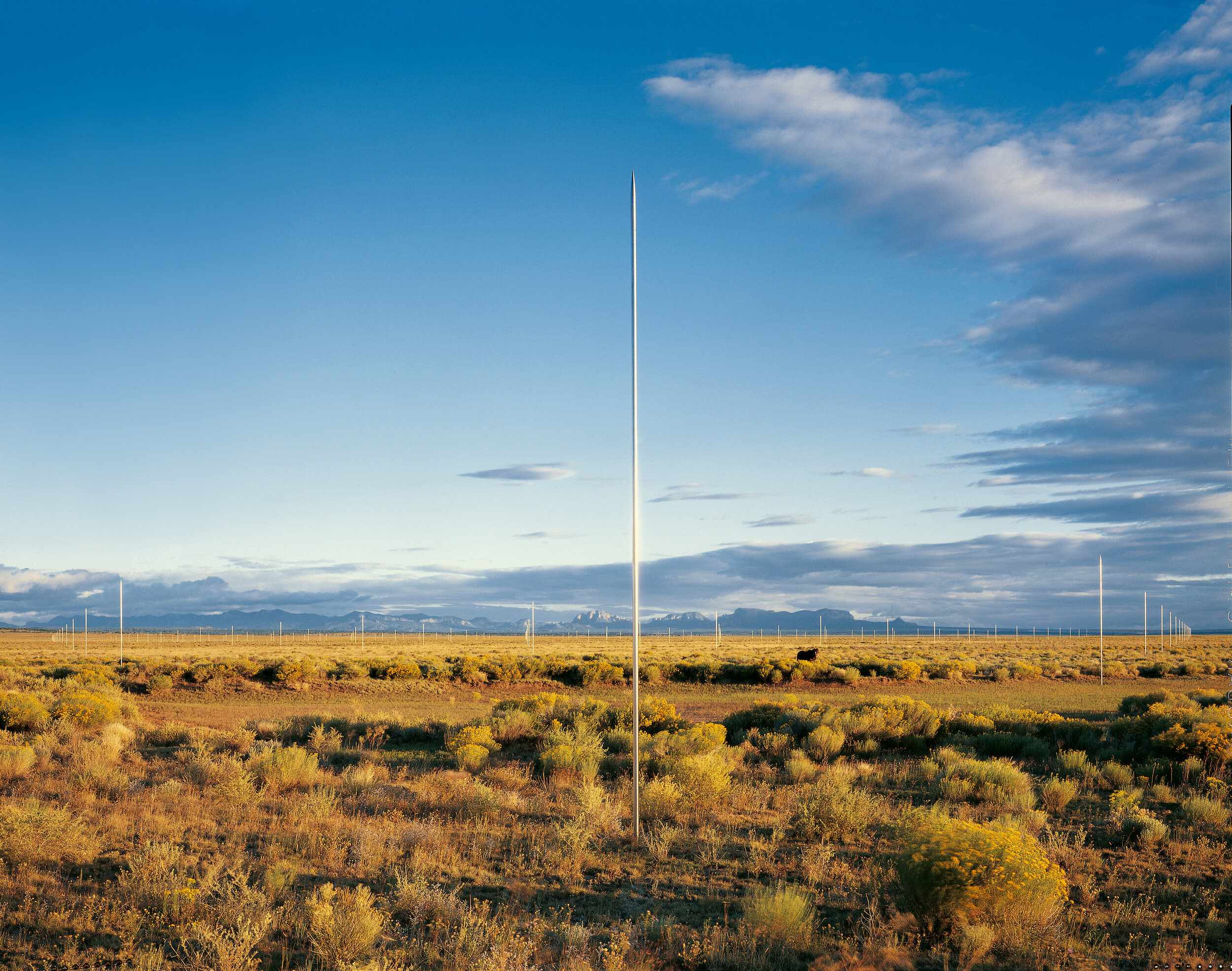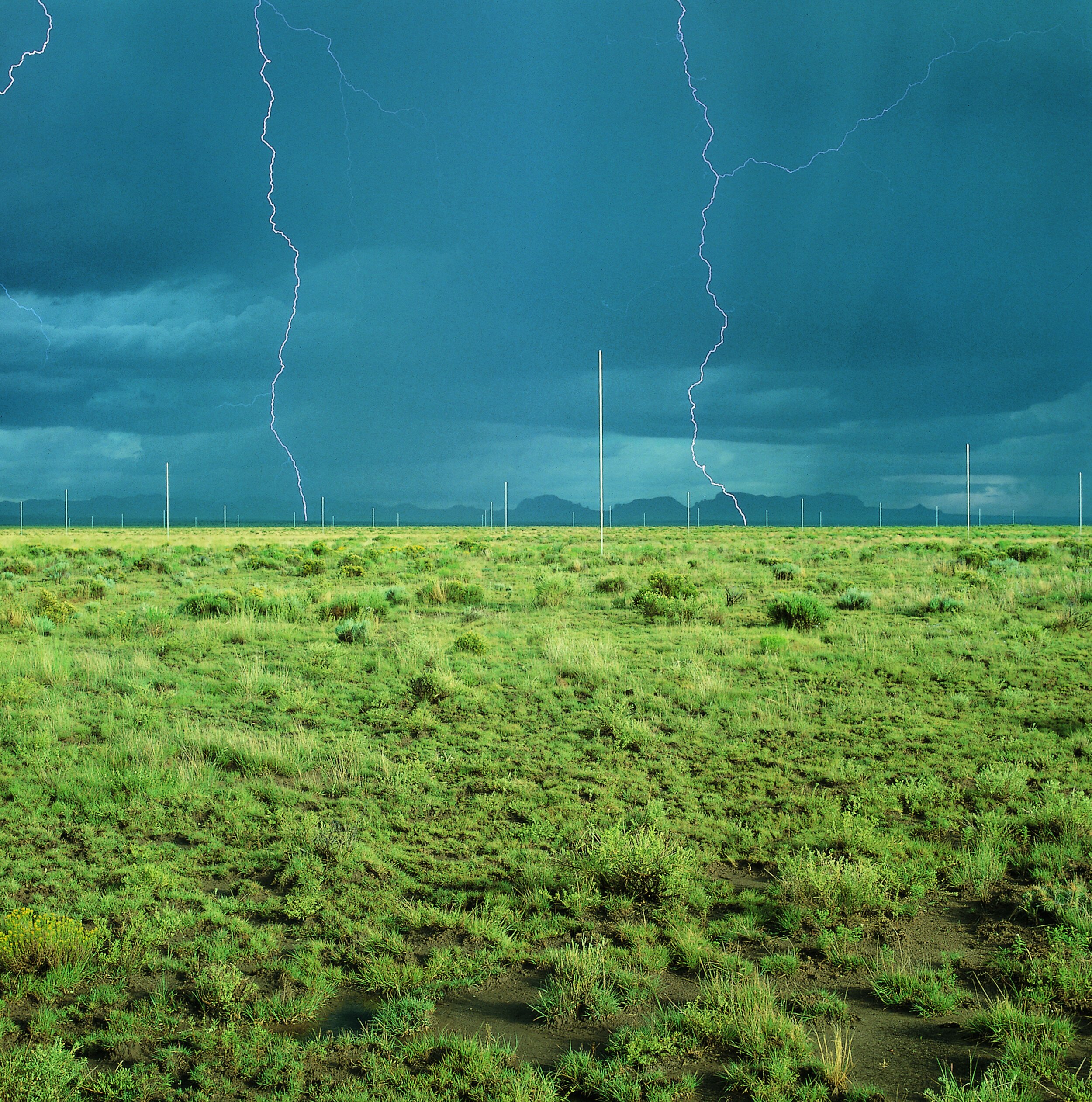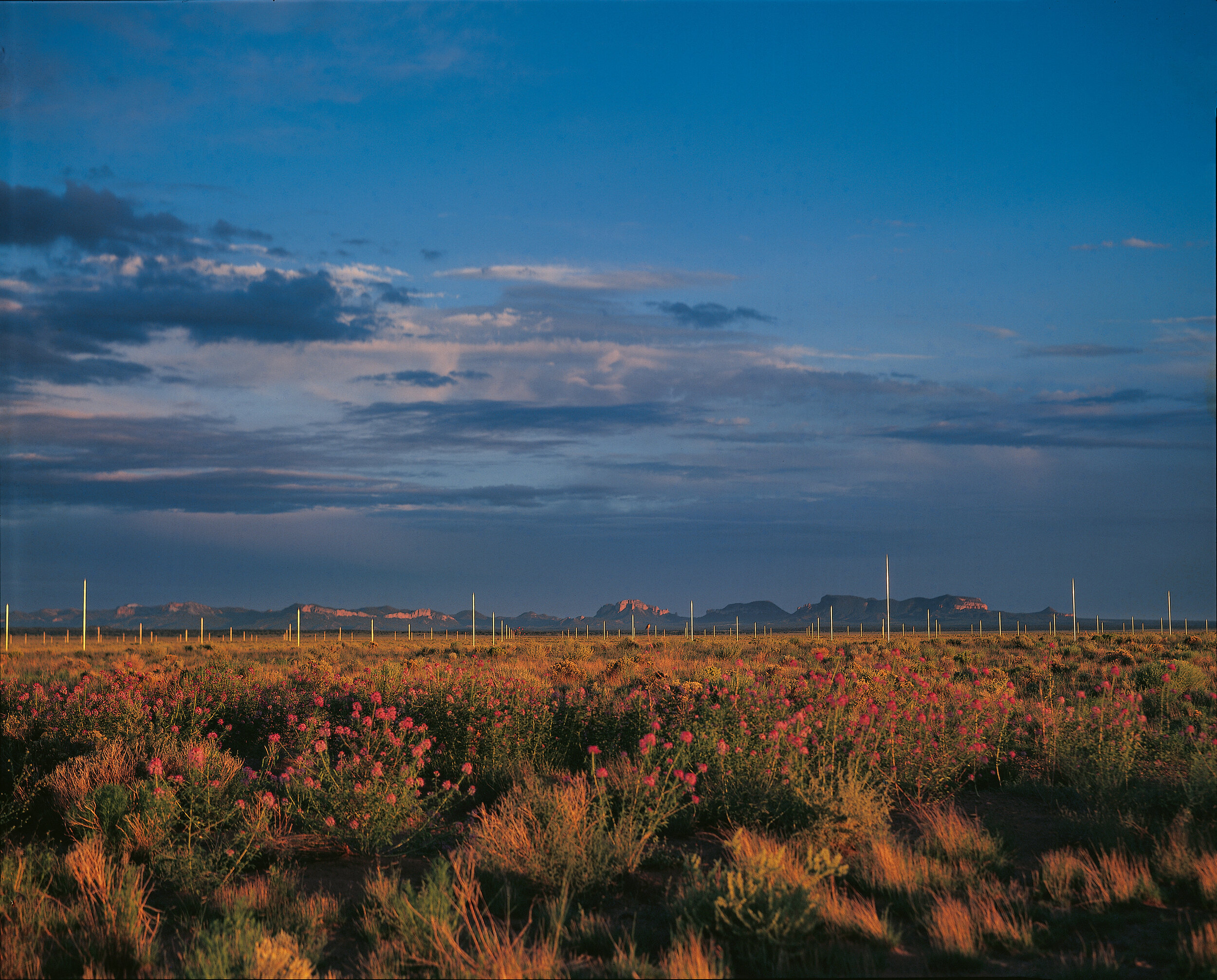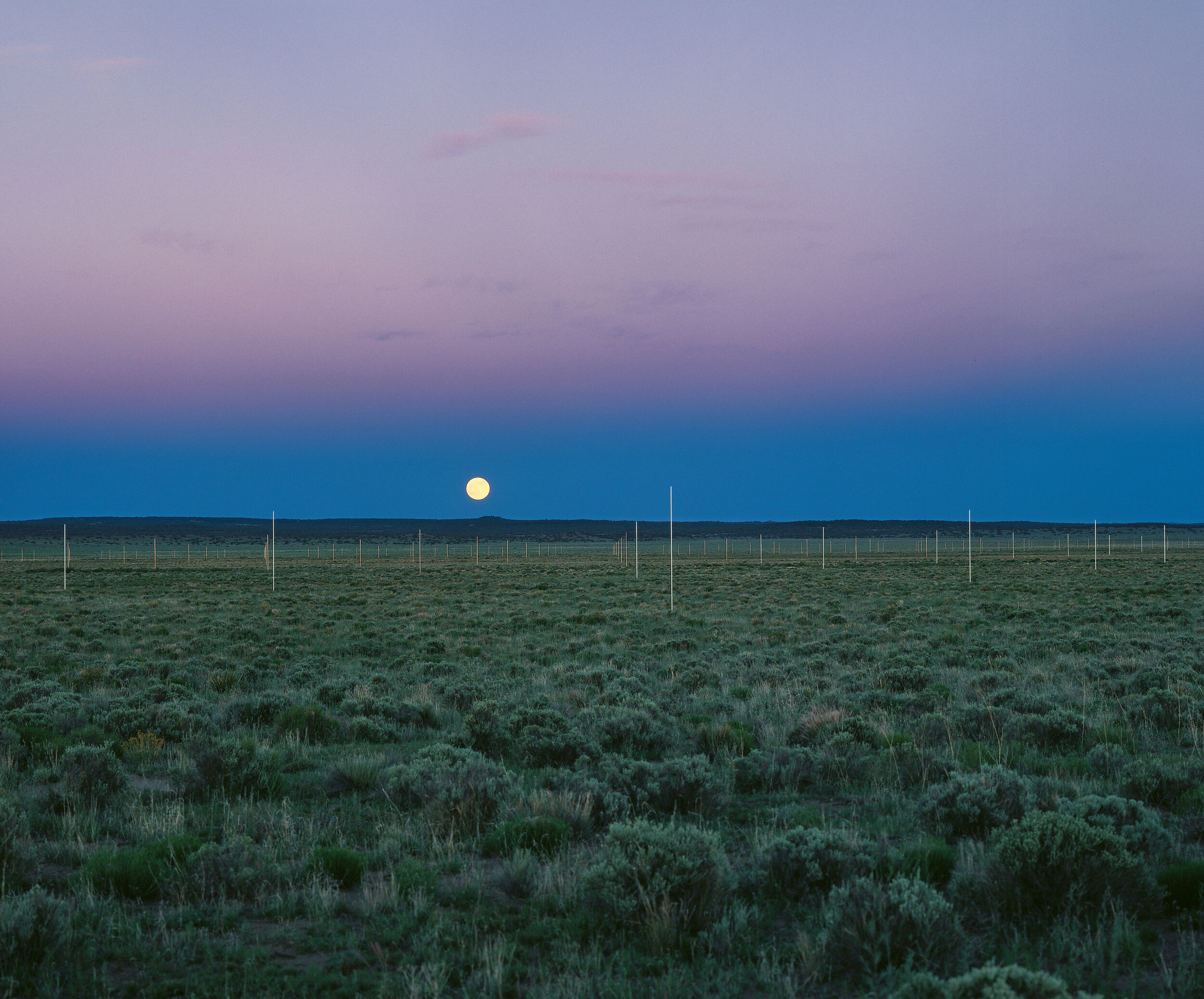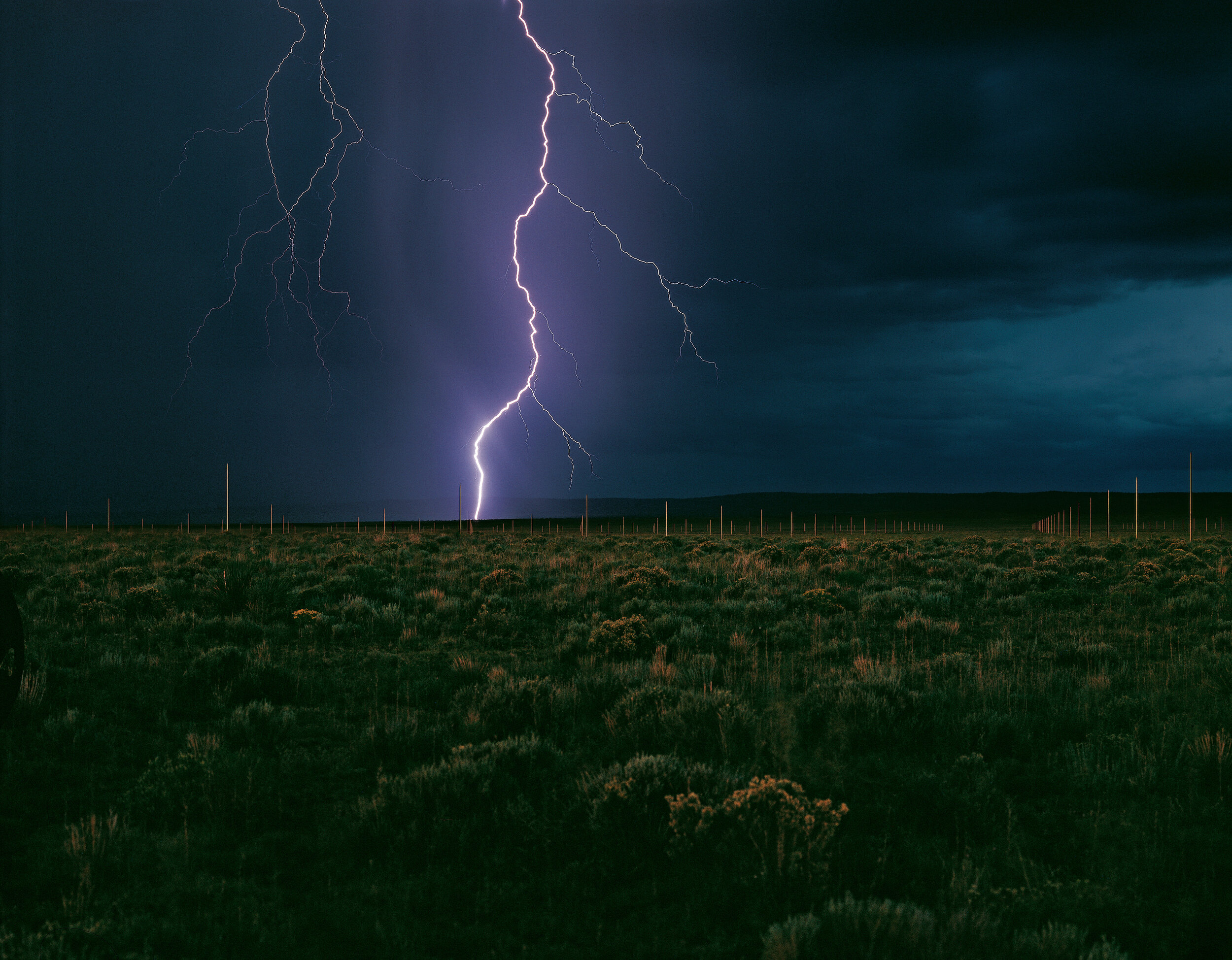Dia Publications Spotlight: Walter De Maria: The Lightning Field
By Alexis Lowry
Curator, Dia Art Foundation
The Lightning Field (1977) is a work of art by Walter De Maria that consists of 400 polished stainless-steel rods organized into a grid array that is one mile long by one kilometer wide. It is located in the high New Mexican desert. The site was chosen, in part, for the frequency of lightning activity that occurs there, particularly in July and August. As we settle into the dog days of summer, I am thinking about this work often, especially this year, as, in the midst of the COVID-19 pandemic, The Lightning Field is closed to visitors for the first time since it opened to the public in 1979.
With this in mind, here is an excerpt from Dia Art Foundation’s book Walter De Maria: The Lightning Field, which features never-before-seen photography published on the occasion of the work’s fortieth anniversary. John Cliett was commissioned by De Maria and Dia to document this enigmatic artwork over two seasons in 1978 and 1979, but until now nearly all of the resulting photographs remained in De Maria’s archives. This post is the first in a series of excerpts from Dia publications that will be shared regularly on our blog.
Walter De Maria, The Lightning Field, 1977. Long-term installation, western New Mexico. © Estate of Walter De Maria. Photo: John Cliett
The below were written by Cliett between November 1978 and May 1979.
GENERAL OBSERVATIONS
Attempts to record photo images of The Lightning Field have proved successful, and a number of interesting views are available for publicity, informational, and aesthetic purposes. The Field’s potential for providing those who observe it with a multiplicity of visual experiences has, however, been scarcely identified and can never be exhausted. Because the artist’s careful attention to the field’s environment goes so far as to consider the landscape as part of the work (not vice versa), changes in the landscape’s environment as time passes reveal and repeat aspects of the work. At no time is this active nature of the piece more evident than in the summer, when thunderstorms rise up and roam the high plains.
Lightning
Many recordings of lightning strikes were obtained on both 35-mm and 70-mm film. Most of these recordings were made from near the center of the Field and all show poles with good definition. Only a few branched strikes were recorded. Some recordings made at night show the Field illuminated from behind by sheet lightning and by lightning strikes.
During quiet summer nights, I have been imagining the field aglow in electromagnetic activity, bursting with energy and calling out for visitors to return.
You can read more about John Cliett’s experience photographing The Lightning Field in his interview with Jeffrey Kastner for Cabinet Magazine here.
Each of Cliett’s untitled photographs was given a description for the purpose of identification. In order of appearance, those identifying notes are:
Pole in Dry Lake
Afternoon | September 1979
North interior | Southeast
Day Lightning—Two Strikes
Afternoon | August 1979
Interior | Southeast
Turkey Bean Wildflowers at Sunset
20:05 | August 4, 1978
Northwest exterior | Southeast
Moonrise
Twilight | July 1979
Interior | East
Night Lightning “Aura”
Evening | August 10, 1979
West exterior | East

